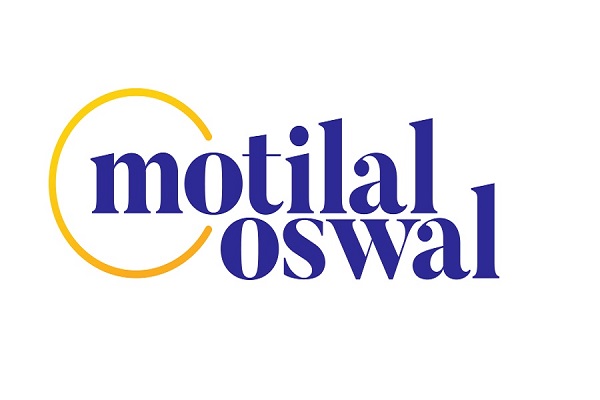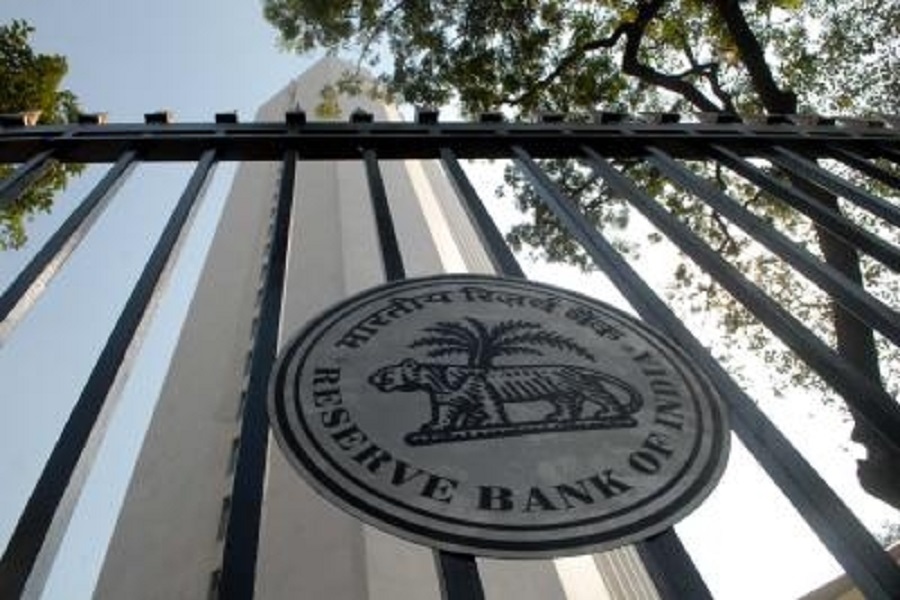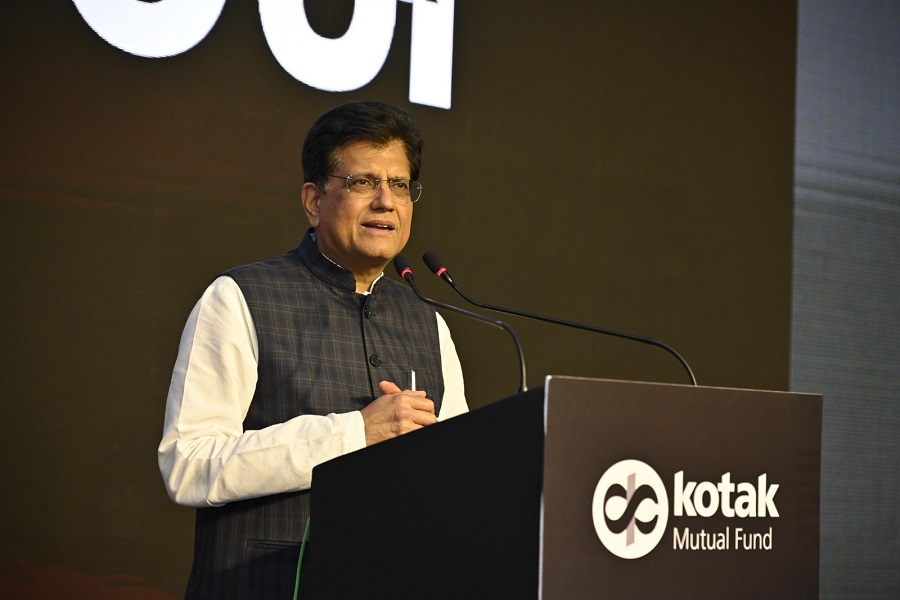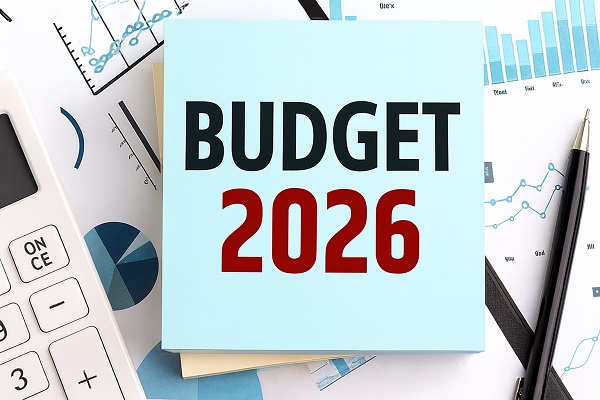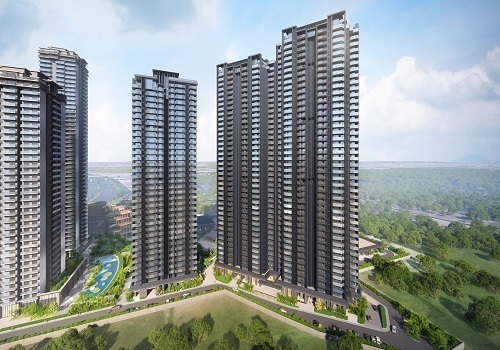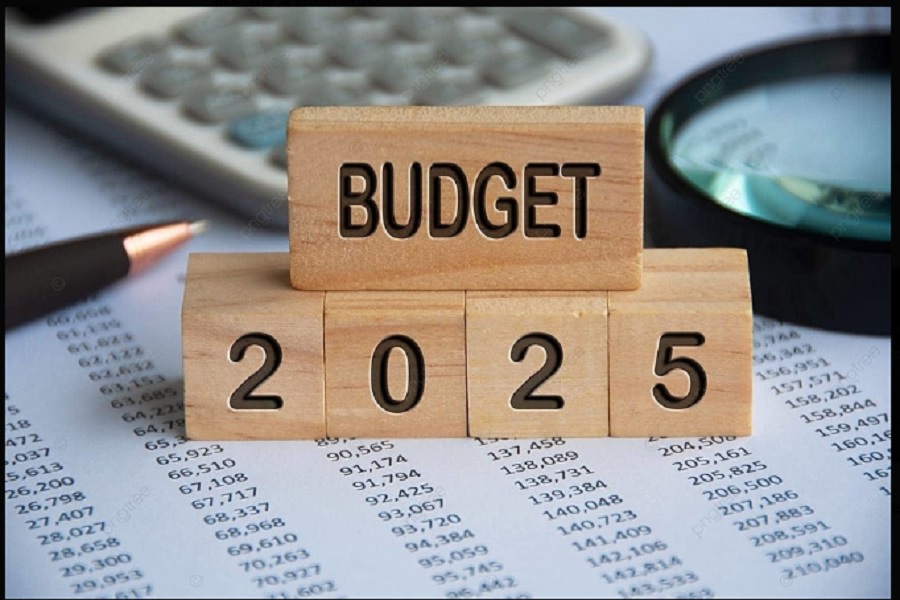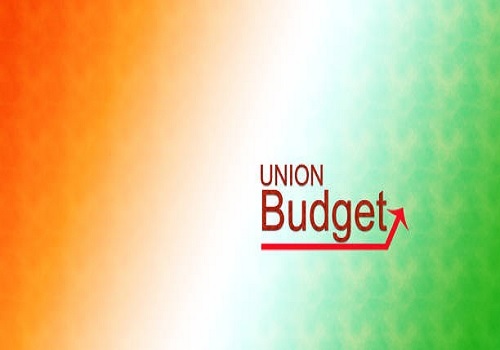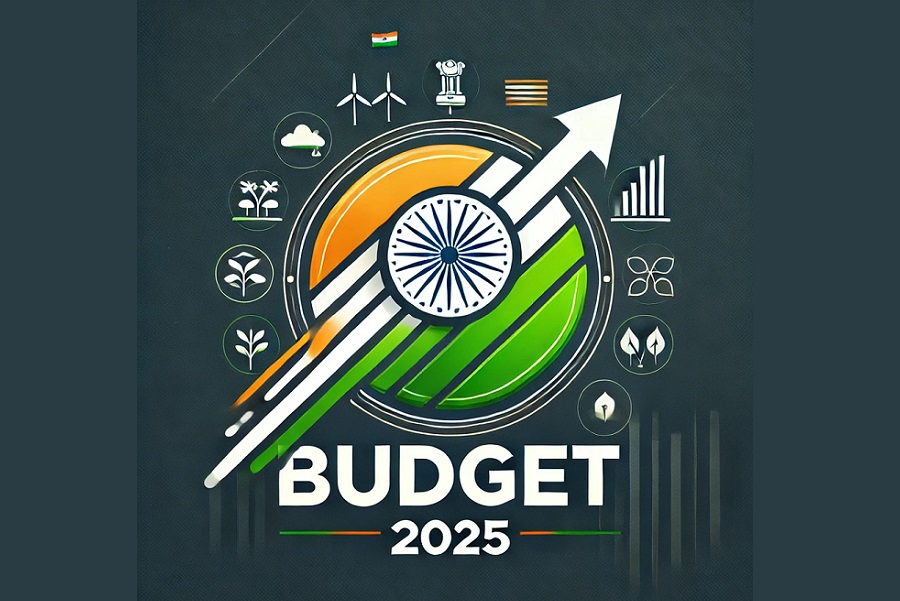Centre Likely to Stay Committed to Fiscal Consolidation in Union Budget: CareEdge Ratings
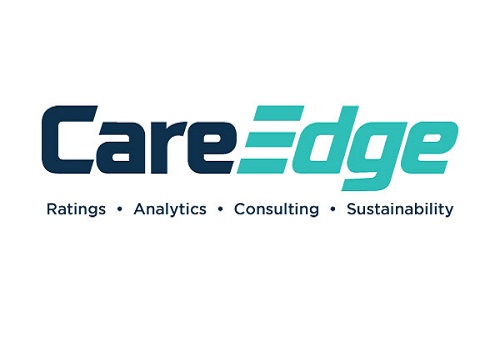
According to CareEdge Ratings, the Centre is likely to stay on the fiscal consolidation path, with a fiscal deficit projected at 4.5% of GDP in FY26.
According to Sachin Gupta, Chief Rating Officer, CareEdge Ratings, “The budget is likely to focus on Supporting consumption , Boost manufacturing competitiveness to support job creation and tap the demographic potential, Emphasis on agriculture via higher allocation for agri R&D, farmers’ welfare and policy reforms, Continued capex emphasis to close India’s infrastructure gap in areas like power, and transportation, and Fiscal discipline with focus on reducing the debt-to-GDP ratio”.
As per CareEdge Ratings, Gross tax revenue is expected to grow by 10.4%, marginally higher than expected nominal GDP growth of 10.3% in FY26. As a result, tax buoyancy is expected at 1 in the same year. Direct tax collections could slow in FY26 amid lower income tax collections on account of likely tax relief, while corporate tax collections will improve due to recovery in growth. Excise duty collections are likely to remain muted as the Special Additional Excise Duty (SAED) on domestically produced crude oil was reduced to nil in Sep 2024. Recent hike in customs duty on edible oil to support custom collections. The possible reversal of the gold customs duty cut and implementation of protective measures for domestic industries will likely bolster revenue from customs duty in FY26. Tax revenue from GST is projected to grow at a healthy rate of 11% in FY25 and 11.4% in FY26.
CareEdge Rating expects RBI to pay dividends in the range of Rs 1.1 -1.3 trillion in FY26, lower than Rs 2.1 trillion last year. Dividend from PSUs/ PSBs to remain healthy. Divestment receipts touched ~Rs 86 billion so far, indicating a major shortfall. Big-ticket divestments, like IDBI Bank and Shipping Corporation, are crucial for achieving targets in FY26.
CareEdge Rating believes that Centre’s capex is expected to fall short of the budgeted target by Rs 1.5 trillion in FY25 amid slower capex in H1. Following a relatively weak capex performance in the current fiscal, it projects capex to rise by 19.8% to Rs 11.5 trillion in FY26. Quality of expenditure is projected to improve in FY26, with capex-to-revex rising to 0.30 after the expected dip to 0.26 in FY25.
In FY25 lower capex is expected to partially offset the impact of lower-than-expected nominal GDP growth and higher revenue expenditure. Consequently, the fiscal deficit is projected at 4.8% of GDP in FY25, marginally undershooting the budget estimate. The Centre is expected to stay on the path of fiscal consolidation with fiscal deficit projected at 4.5% in FY26. CareEdge Ratings expects gross borrowing to increase to Rs 14.3-14.8 trillion in FY26 (Vs 14 trillion in FY25) due to higher redemptions. However, net borrowing is likely to fall marginally in FY26, ranging from Rs 11.2-11.6 trillion Vs 11.6 trillion in FY25.
Rajani Sinha, Chief Economist, CareEdge Ratings said, “Nominal GDP growth is projected to be lower at 9.7% in FY25 as against budgeted growth of 10.5%. We project FY26 nominal GDP growth at 10.3%and expects gross borrowing to increase to Rs 14.3-14.8 trillion in FY26 (Vs 14 trillion in FY25) due to higher redemptions. However, net borrowing is likely to fall marginally, ranging from Rs 11.2-11.6 trillion Vs 11.6 trillion in FY25”
The FM will have to do the fine balancing act of boosting economic growth while ensuring fiscal prudence As India moves towards its aspiration of Viksit Bharat, there is a need to move towards a higher growth trajectory while ensuring that the growth is sustainable and equitable.
Sectoral expectations from Union Budget
1. Agri and Allied (Fertilisers)
In the FY25 budget, the government had initially provided for a total subsidy of Rs 1.64 lakh crore, which was subsequently enhanced by an additional NPK subsidy of Rs 3500/MT for DAP fertiliser, which is expected to result in a further subsidy of ~Rs 3,850 crore. Accordingly, the aggregate subsidy budget for FY25 will be at ~Rs 1.68 lakh crore. Timely increases in the subsidy budget and timely disbursement of subsidy dues have helped the fertiliser industry keep subsidy receivables at a manageable level, and leverage levels have primarily remained comfortable.
According to CareEdge Ratings, the industry expects Rs 1.75 lakh crore of allocation for subsidies towards urea and non-urea fertilizers in the upcoming budget for FY26. There is a long pending demand to reduce import duty on imports of phosphoric acid and rock phosphate to improve the competitiveness of domestic fertiliser manufacturers. There is an expectation for some incentive for the promotion of organic fertilisers to make India a hub for organic fertiliser production
2. Auto and Auto Components
According to CareEdge Ratings, the FY24 and FY25 budgets emphasized accelerating the adoption of Electric Vehicles. This year, while the focus on EVs is expected to persist, there is growing anticipation in the FY26 budget for incentives aimed at enhancing EV charging infrastructure to gain momentum.
CareEdge Ratings expect Union Budget to address a simplified classification and GST framework for auto and auto components. It also expects incentives to expand EV charging infrastructure, ensuring seamless inter-city travel and fostering a sustainable transportation ecosystem nationwide, and incentives for faster deployment of electric buses by private bus operators and quicker deployment of electric trucks. It believes budget will also address a Uniform GST rate on batteries irrespective of technology type, Tax incentives along with GST reduction for hybrid vehicles to encourage their adoption, and a Relaxation/modifications in the PLI scheme, which hinders the participation of smaller players.
3. Financial Services
The banking sector has logged improvements in capital buffers, asset quality, and profitability amidst substantial business expansion. The growth in bank credit has converged towards deposits. Deposits have gradually shifted towards schemes offering higher returns. Meanwhile, Industrial credit has been rising but remains below the growth in loans to other major sectors. Services and personal loans led the overall credit growth. The improvement in asset quality of SCBs has been broad-based, with the GNPA ratio declining to a 12-year low of 2.6% in September 2024, except for a marginal uptick in respect of credit card receivables.
However, the half-yearly slippage ratio increased marginally to 0.7%. NBFCs maintained robust credit growth. Personal loan growth decelerated, whereas growth in loans to industry and services accelerated. The GNPA ratio continued its downward trajectory while the capital position remained steady. Meanwhile, MFIs and unsecured business loan segments face asset quality challenges due to a rise in the number of loans & average incremental ticket size for MFIs and higher delinquencies in the unsecured loans segment. Housing finance companies (HFCs) credit also grew in double digits amidst structural changes in the aftermath of the merger of a dominant HFC with a bank.
CareEdge expectation for the sector is:
a. Banking and NBFCs
* Incentivizing Inflows: Undertake steps to improve deposit inflows into the banking sector
* Encouraging credit flow: Undertake steps such as interest subvention schemes and expanded credit guarantees to improve credit flow to MSMEs, agriculture, and infrastructure. Step up a mechanism for providing long-term funds for the manufacturing sector in a similar manner done for the infrastructure sector via dedicated funds or tax benefits.
* Sectoral reforms: Progress on reforms such as the ECL Framework, etc. Reduce differentiation in regulations between banks and NBFCs e.g. micro gold loan (under Rs 50k) to farmers
* Affordable housing finance: Increase in allocation for the Pradhan Mantri Awas Yojana (PMAY) and extension of PMAY-CLSS scheme along with a revision of price cap for affordable housing
* MFI: Dedicated funding window to address persistent funding challenges, especially for mid-sized and small MFIs and a government-backed credit guarantee framework. Setting up a credit risk cost-sharing structure to streamline lending rates.
* Others include a Reduction in the SARFAESI Act threshold for NBFCs. Increase in fund allocation to government-backed institutions like SIDBI, NABARD, NHB etc.
b. Insurance and Others
* Infusion of capital in public sector general insurance companies: This would help the companies have lower solvency ratios and provide them with the necessary growth capital.
* Sectoral reforms: Reforms on the line of the composite license, micro insurance, IND AS, etc to drive insurance for all by 2047
* GST reduction on term life and health insurance policies to reduce costs and improve access.
* Optimisation of IBC: Currently under the IBC, cases take nearly two years to resolve while recovering around 30% of the claims. Norms for speedy resolution and increasing recoveries could be enhanced.
4. Hospitality & Tourism
According to CareEdge Ratings, the persistent demand, limited room supply, and increasing international traffic continue to have a positive impact on hotel pricing in the coming year. Hence, the union budget FY25-2026 is being looked upon to introduce reforms to support the sector further. It believes the budget will address measures to boost the sector according to “infrastructure” status to the hotel industry and “industry” status to the travel and tourism sector. It also expects an increased infrastructure investments and incentives such as tax breaks or subsidies to promote investments in sustainable tourism, and reforms regarding the rationalisation of taxes for all the hotels across all categories and convention centres.
5. Pharma and Healthcare
In FY24, the Indian pharmaceutical sector witnessed robust growth, achieving a nearly 9% year-on-year increase and reaching a market size of approximately USD 54 billion, driven by growth in domestic and exports sales. Exports grew at an impressive 10%, while the domestic market maintained a steady 9% rise compared to FY23. The domestic market's performance was bolstered by increased demand in chronic therapeutic areas and price adjustments approved by the NPPA. Looking ahead, CareEdge Ratings predicts the industry will continue to grow at a similar pace of around 9% annually, with exports and domestic segments expected to sustain parallel growth trajectories.
CareEdge Ratings expects an increase in healthcare budget allocation by 2.50%-3% over last year to enhance infrastructure in rural and semi-urban regions. It says budget may re-introduce weighted average tax benefits to promote R&D in the pharmaceutical sector, and there could be a reduction in the GST rate on health insurance premiums from the current level of 18%. It also expects extending Section 115BAB to pharmaceutical R&D companies for a lower tax rate and increase in the Production Linked Incentive (PLI) scheme budget. It expects budget to focus on encouraging domestic healthcare device manufacturers to build a strong, advanced ecosystem, raising the health insurance premium deduction limit under Section 80D of the IT Act, and reduction in customs duties on life-saving drugs.
6. Real Estate
In the post-pandemic era, the real estate sector has grown strongly in the mid and luxury segments. At the same time, affordable housing has experienced a shrinking overall share in demand and launches. As a result, the key expectation from Budget FY25-26 is to prioritise affordability through measures like reintroducing the CLSS scheme for buyers and offering tax holidays for developers, among other initiatives. Extending tax benefits, including higher deductions on home loan interest and principal, is expected to be a key driver in sustaining demand and supporting long-term growth in the sector.
CareEdge Ratings expects budget to grant Real Estate of industry status, reintroduce a 100% tax holiday for an affordable housing project, a relaunch of subsidy schemes like CLSS under PMAY to improve affordability, and upward revision in the carpet area and monetary limits for affordable housing. It also expects allocation of additional funds to the SWAMIH fund to support the completion of stalled projects, a raise in the deduction limit for home loan interest and principal, and reduction in GST rates for construction materials, particularly cement, to enhance overall affordability.
7. Thermal Power, distribution and transmission
The power sector has witnessed strong growth in demand in recent times. The thermal power segment has seen a revival of fortunes supported by higher merchant rates and healthy availability of coal. Capacity addition in the transmission segment is critical to meet the 500 GW renewable capacity target by FY2030.
According to CareEdge Ratings, the budget will focus on bringing electricity under the GST regime can make input tax in the value chain creditable, thereby improving tax efficiency and affordability. It expects a continued allocation under various schemes like RDSS and green corridors for augmenting the transmission and distribution infrastructure and loss reduction measures, continuation of loans from centre to state and additional fiscal deficit linked to power sector reforms, scheme for promotion of energy efficiency measures, and a scheme for promotion of smart meter manufacturing and transmission equipment in line with Make in India initiatives, including lower tax rate for new manufacturing units.
8. Renewable Power
India is steadfastly moving towards its target of 500 GW non-fossil fuel capacity by 2030 through a concerted effort to accelerate capacity additions and deepen its manufacturing value chain while remaining cognizant of its energy security needs as a developing nation as well as the variability induced by the growing share of RE in its energy mix.
CareEdge Ratings expects the following measures/initiatives from the budget to promote the RE sector:
* Extension of the inter-state transmission system (ISTS) charge waiver beyond June 30, 2025, to maintain the cost-competitiveness of RE.
* Enhanced capital allocation towards Green Energy Corridor projects to ensure adequate power evacuation through dedicated transmission capacity buildout.
* Higher capital allocation towards PM Surya Ghar Muft Bijli Yojana for FY26, along with streamlining of procedural hurdles to ensure coverage of 1 crore households within an envisaged timeline of FY27.
* Rationalization of GST on RE components from 12% to 5% to reduce end-consumer costs.
* Enhancement of budgetary support to offshore wind capacity development along with incentives to OEMs for large-size turbines (6+ MW) and inclusion in RPO.
* Enhancement of fund allocation for green hydrogen over and above current outlay under the SIGHT programme.
* Reinstatement of 15% concessional corporate tax for manufacturing companies, apart from establishing renewable energy manufacturing zones (REMZ), entailing additional incentives and streamlined approvals for incubated entities.
* Foster the domestic BESS ecosystem by providing initial subsidy support through PLI and/or VGF, near-term tax relaxations on importing crucial raw materials, and establishing public/private entities for exploring and operating overseas critical mineral assets.
* Initiatives to promote R&D in the sector by introducing policies supporting investments or extending financial assistance.
9.Roads & Highways
The government’s continued emphasis on infrastructure development is expected to keep the roads and highways sector a priority. The government will likely focus on expanding road networks, developing logistics parks and improving the overall transport infrastructure to support efficient economic activity. The pace of asset monetisation is also anticipated to gain momentum. However, it is essential to address the recent slowdown in project awards while tackling execution challenges and resolving land acquisition issues to maintain progress and efficiency in the sector.
CareEdge Ratings expects an increase in budgetary allocation of 7-8% for roads & highways. It also expects a gradual shift of project awarding from EPC to BOT-Toll models and greater focus on asset monetisation by way of InvIT and TOT.
10. Sugar and Allied Sector
The Union Budget for FY24-25, while not offering direct benefits to the sugar and allied industries, has left room for the sector to hope for important policy changes and financial measures in the upcoming budget (FY25-26) that could stimulate growth and profitability for the sector.
CareEdge Ratings expects an increase in Minimum Support Price (MSP) of Sugar to commensurate with increased Fair & Remunerative Price (FRP) of Sugarcane, a long requirement of the industry since the previous MSP revision happened in 2019. It expects government to relaxing/lifting restrictions imposed on sugar exports for sugar season 2024-2025. It believes budget will have an upward revision in procurement prices of ethanol made out of sugarcane juice, sugar syrup, B-Heavy molasses and C-Heavy molasses to promote sugarcane crop as a major driver to achieve the ethanol blending targets of India. It expects budget will be including sugar and allied businesses in the ‘Priority Sector’ category to enhance credit access and other benefits for the industry players.
11. Telecom Sector
The Indian telecom industry is experiencing a significant transformation, marked by the wider acceptance and rapid adoption of 5G technology, advancements in machine-to-machine communication, IoT applications in manufacturing, and the emergence of generative Artificial Intelligence (AI) applications. Additionally, satellite-based broadband services are on the horizon. As a crucial driver of the nation’s digital transformation, the telecom industry has several key expectations for sustainable growth in the upcoming union budget.
CareEdge Ratings expectation is that budget will address PLI schemes to widen domestic telecom equipment manufacturing for 4G & 5G network expansion and densification, and expects Tax holidays or concessional tax rates for data centres which are crucial enablers of digital services that are rising due to increased mobile internet and cloud computing activities, It also expects budget to clarify income taxation for non-resident telecom operators, resolving long-standing litigations and providing tax certainty for international telecom transactions.
12. Textile
The Indian textile industry stands at around USD 140-145 billion in FY24-25, which is expected to grow at around 7-9% in the near to medium term believes CareEdge Ratings. With exports accounting for 20-25% of the Indian textile industry, global demand plays a role in influencing the prospects of the industry. The Indian textile exports saw a decline of 4% to USD 33.16 billion in FY24 due to the impact on consumer demand arising from high inflation and rising interest rates, but it recovered by 7% in 8MFY25 and stood at USD 22.55 billion. India's textile exports are expected to grow by 6-7% in FY25 and thereafter to grow by 8-9% in the medium term, benefiting from the China+1 factor and the Bangladesh crisis. Further, the government of India may sign the Free Trade Agreement (FTA) with the UK in CY25 which shall enhance the competitiveness of Indian exporters.
According to CareEdge Ratings the budget expectation for the sector is reintroduction/ extension of interest equalisation for pre and post-shipment rupee export credit, introduction of Production Linked Incentive (PLI) scheme for cotton-based fabrics and apparel, and reduction in basic customs duty (BCD) rates on all man-made (MMF) fibres, filaments, and essential chemicals like purified terephthalic acid (PTA) and mono ethylene glycol (MEG), which are the critical raw materials for the production of MMF fibres.
13.Steel
According to CareEdge Ratings, domestic steel consumption is expected to grow at a CAGR of ~8.50% over the next 2-3 years, driven by the growth emanating from various end-user industries. India’s crude steel production grew by 3.70%, finished steel production increased by 5.10% and steel consumption surged by 13.66% during H1FY25 largely driven by government’s emphasis on infrastructure spending and the ‘Make in India’ initiative. However, India has become a net importer of finished steel, with exports dropping nearly 36% and imports rising over 41% in H1FY25.
CareEdge Ratings expects in budget an implementation of safeguard or anti-dumping duties to restrict cheaper steel imports from China and other countries, imposing a cap on steel imports from FTA countries to protect domestic manufacturers, and extending the PLI scheme to other manufactured steel products. It also believes that budget will have Increased capital expenditure and infrastructure focus to boost the domestic steel demand, Increased funding for skill development and training programs to create a job-ready steel industry workforce, and support for initiatives aimed at reducing emissions and boosting research and development in green steel technologies.
Above views are of the author and not of the website kindly read disclaimer




.jpg)


